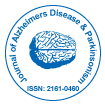Nuestro grupo organiza más de 3000 Series de conferencias Eventos cada año en EE. UU., Europa y América. Asia con el apoyo de 1.000 sociedades científicas más y publica más de 700 Acceso abierto Revistas que contienen más de 50.000 personalidades eminentes, científicos de renombre como miembros del consejo editorial.
Revistas de acceso abierto que ganan más lectores y citas
700 revistas y 15 000 000 de lectores Cada revista obtiene más de 25 000 lectores
Indexado en
- Índice Copérnico
- Google Académico
- sherpa romeo
- Abrir puerta J
- Revista GenámicaBuscar
- Claves Académicas
- TOC de revistas
- Infraestructura Nacional del Conocimiento de China (CNKI)
- Biblioteca de revistas electrónicas
- Búsqueda de referencia
- Universidad Hamdard
- EBSCO AZ
- OCLC-WorldCat
- Catálogo en línea SWB
- Biblioteca Virtual de Biología (vifabio)
- publones
- Fundación de Ginebra para la educación y la investigación médicas
- Pub Europeo
- ICMJE
Enlaces útiles
Revistas de acceso abierto
Comparte esta página
Abstracto
Transmission of Tau Pathology from Human to Rodent Brain: How to Humanise Animal Models for Alzheimer’s Disease Research
Tomas Smolek, Santosh Jadhav, Bernadeta Valachova, Thomas Vogels, Jaroslav Legath, Petr Novak and Norbert Zilka
Tauopathies represent a group of neurodegenerative disorders characterised by the accumulation of conformationally altered tau protein. Alzheimer’s disease (AD) is the most prevalent primary tauopathy. In AD, tau pathology progressively spreads across a stereotypical sequence of anatomically connected brain regions. In early stages, the disease manifests in the locus coeruleus and entorhinal cortex; at later stages it spreads through the hippocampus to cortical brain areas. Recent studies suggest that spreading of pathological tau occurs predominantly through neuron-to-neuron transmission; however, glial cells can also be involved in this process. Propagation depends on the conformational state and post-translational modifications of tau protein of various tau strains. Abnormal tau can subsequently act as a seed, misfolding and aggregating normal tau proteins inside the cells. Several research groups have successfully recapitulated tau transmission in animal models. Currently, we are able to induce and drive tau neurodegeneration by using tau species isolated from diseased human brains. Such state-of-the-art “humanised” animal models represent a powerful tool for development of new drug leads and diagnostics for human tauopathies.
Revistas por tema
- Agricultura y acuicultura
- Alimentación y Nutrición
- Bioinformática y biología de sistemas
- Bioquímica
- Ciencia de los Materiales
- Ciencia general
- Ciencias Ambientales
- Ciencias Clínicas
- Ciencias farmacéuticas
- Ciencias Médicas
- Ciencias Sociales y Políticas
- Ciencias Veterinarias
- Enfermería y atención sanitaria
- Física
- Genética y biología molecular
- Geología y Ciencias de la Tierra
- Ingeniería
- Inmunología y Microbiología
- Química
Revistas clínicas y médicas
- Anestesiología
- Biología Molecular
- Cardiología
- Cirugía
- Cuidado de la salud
- Dermatología
- Diabetes y Endocrinología
- Enfermedades infecciosas
- Enfermería
- Gastroenterología
- Genética
- Inmunología
- Investigación clínica
- Medicamento
- Microbiología
- Neurología
- Odontología
- Oftalmología
- Oncología
- Pediatría
- Toxicología

 English
English  Chinese
Chinese  Russian
Russian  German
German  French
French  Japanese
Japanese  Portuguese
Portuguese  Hindi
Hindi